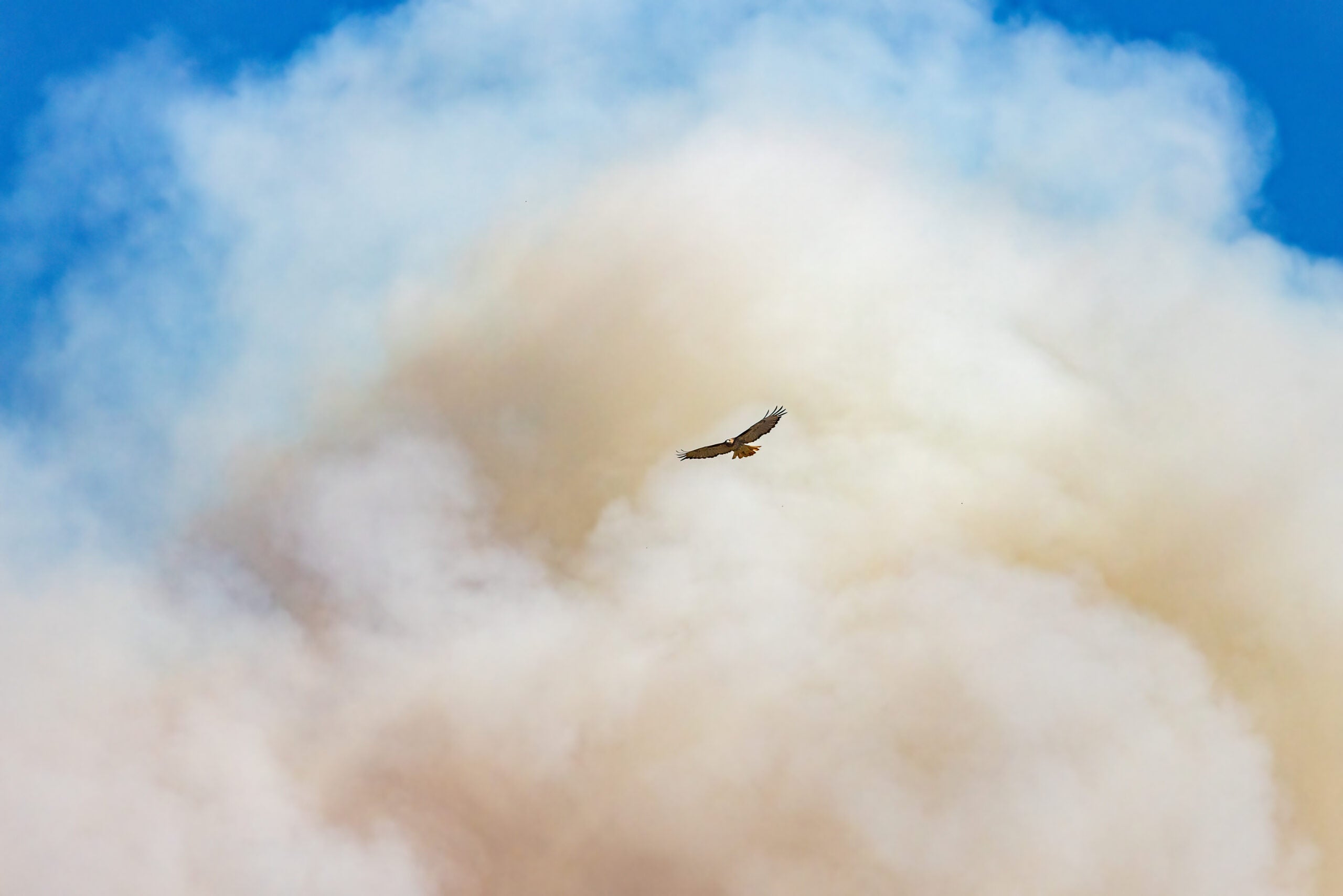
Originally posted on October 4th, 2024. Valley Fire updates will be posted here periodically, with newest updates at the top of the page. Thank you for your support.
Spring 2025 Update
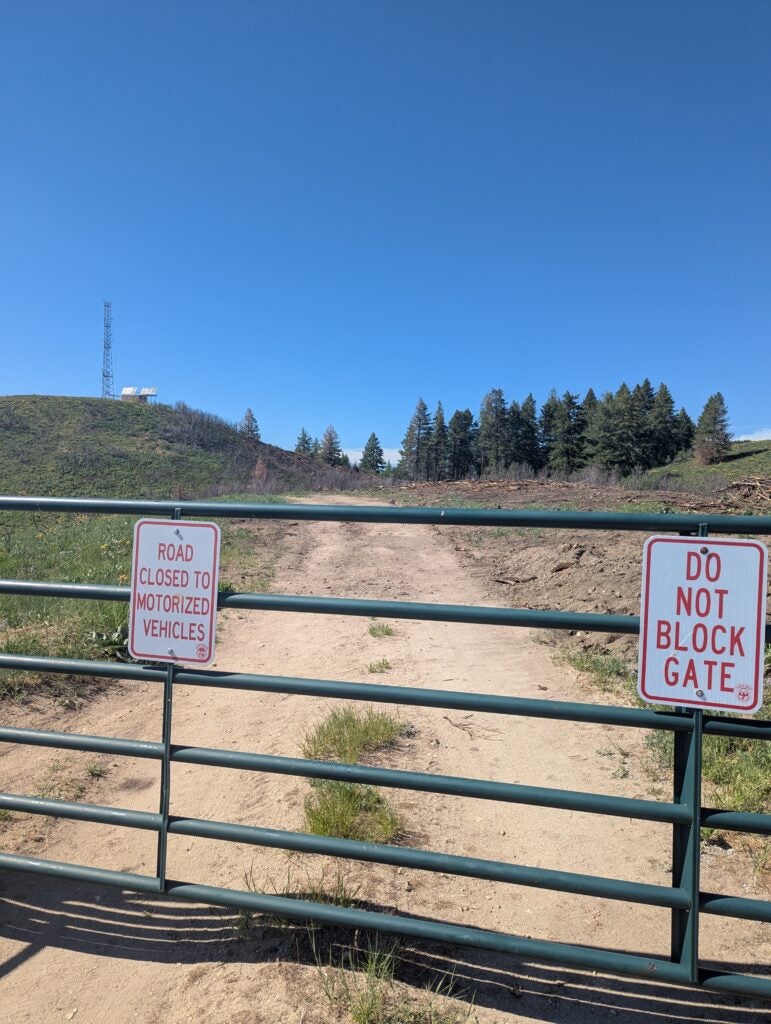
We had the chance to return to Lucky Peak for our first bird monitoring visit since the Valley Fire burned our station in October 2024, and we wanted to share an update with all of you.
While there are some very stark views, we left feeling hopeful for the future of our station and the birds.

One of our biggest worries was that the shrub-steppe habitat would be overtaken by invasive plants. At Lucky Peak itself, it seems that the native forbs are staving off the cheatgrass and skeletonweed. And we spotted many young seedlings recently planted thanks to Idaho Department of Fish and Game volunteer efforts. We were very glad to see this recovery.
Highland Valley Road, leading up to the station, has a bigger battle to face with these hard-to-control weeds. As our climate warms and dries, this will be an expanding problem we all face. Idaho Fish and Game could use your donations and volunteer time to help with these efforts. (sign up here to stay up to date on IDFG volunteer opportunities)
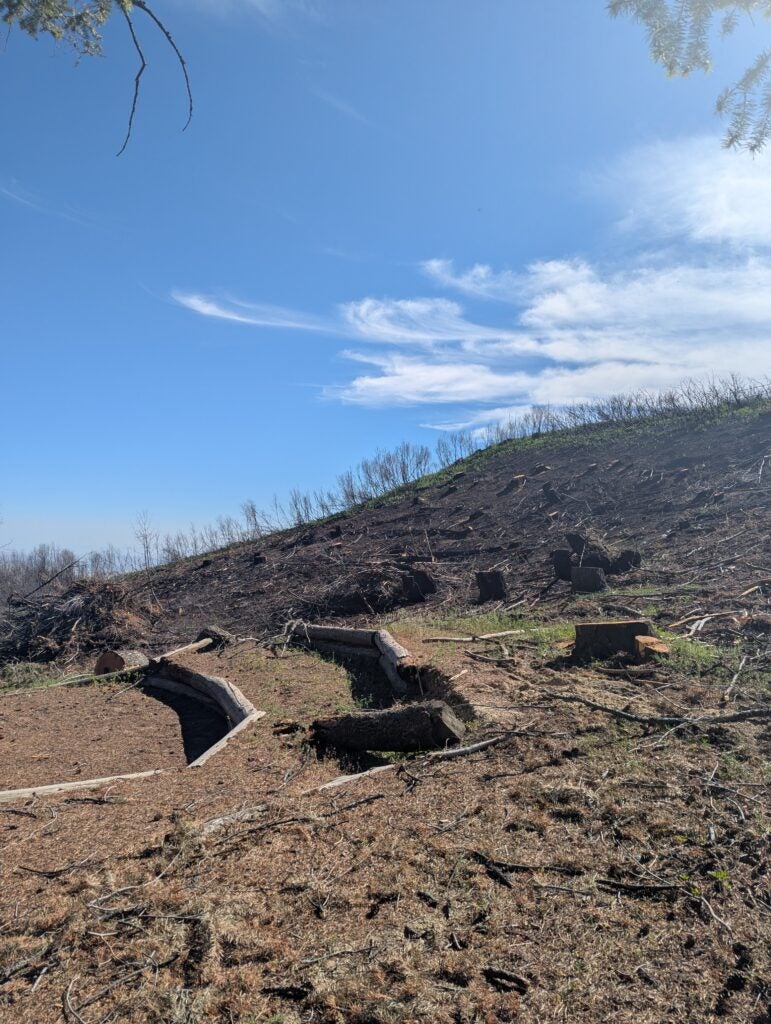
Photo Credit: Heidi Ware Carlisle
The most visually impacted area in camp is the hillside where all our crew tents were destroyed. The tall Douglas-fir trees were completely burned, and this spring a forester worked to remove these hazard trees to make it safe for people to return to our station. It will be a lifetime before that hillside returns to something like what we once knew, but we were very glad to see countless ninebark shrub starts popping out from the ash everywhere we looked.
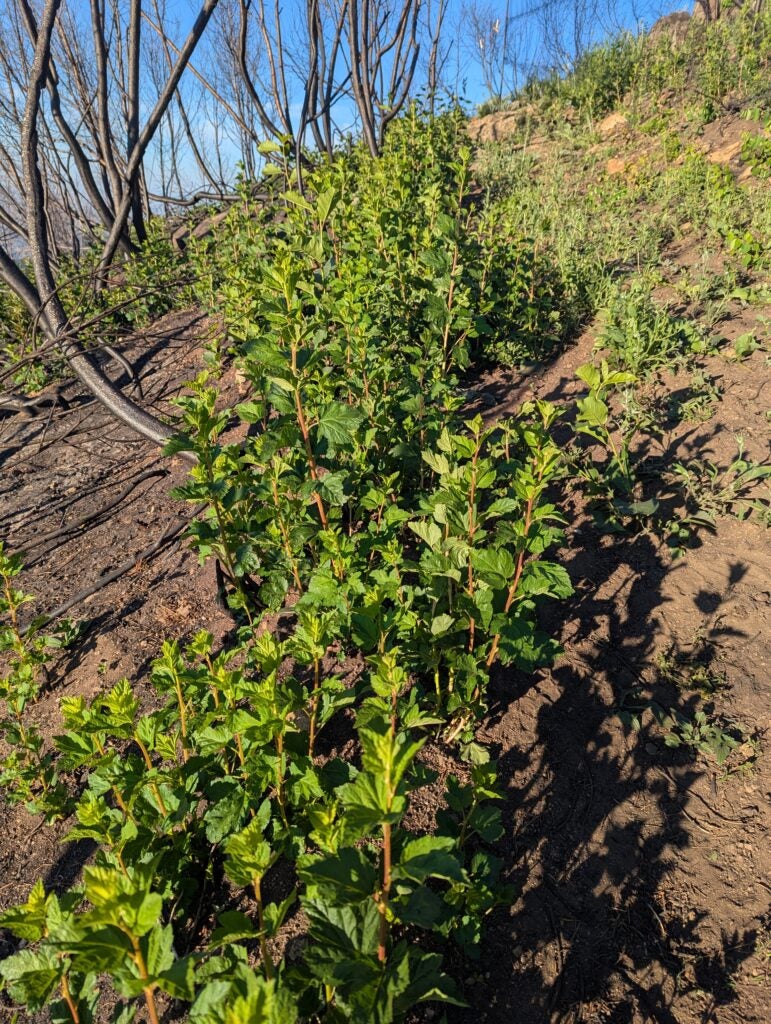
In this area, the biggest pang we felt was for our 2024 crew and everything they lost that day. This will be a focus for habitat restoration work, and we believe it will become lush habitat for shrub-loving species.
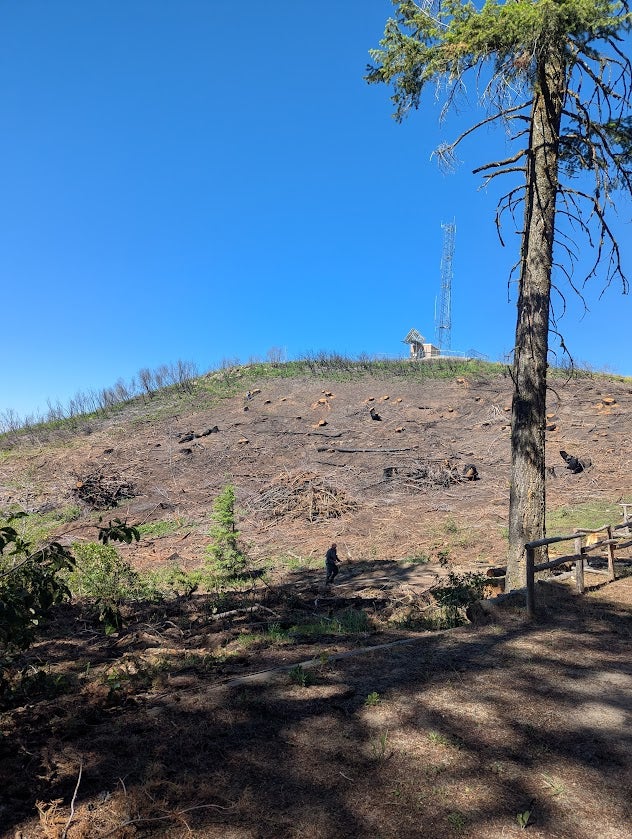
The most intensely burned cherry patches (between our songbird nets 1 and 3, if you know our station) were quite stark—but even there, the shrub regrowth was astounding. In a few years, we predict we’ll have a LOT of very happy Lazuli Buntings and MacGillivray’s Warblers.
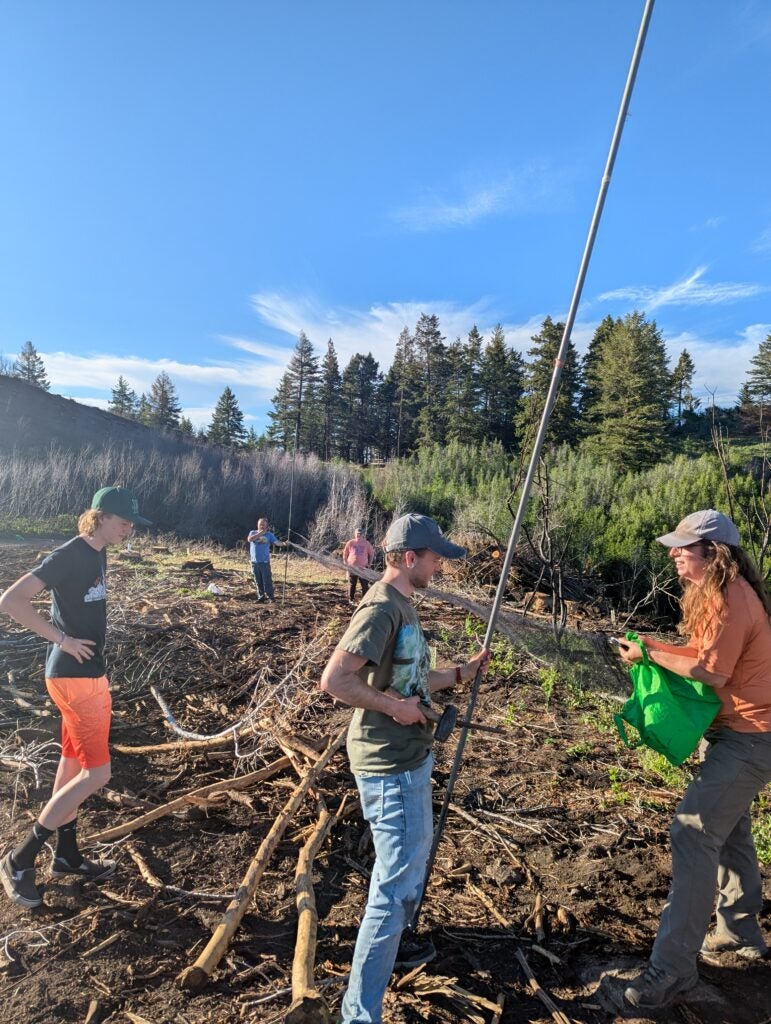
The patch of trees by the lower wall tent (the first visitor tent you pass as you enter camp) was completely burned in the fire and has since been removed by the forester. This is a big loss for our site, and we all felt a pang of sadness standing there, trying to find where our net lane 3 had been—struggling to recognize the spot we’ve stood so many times before.
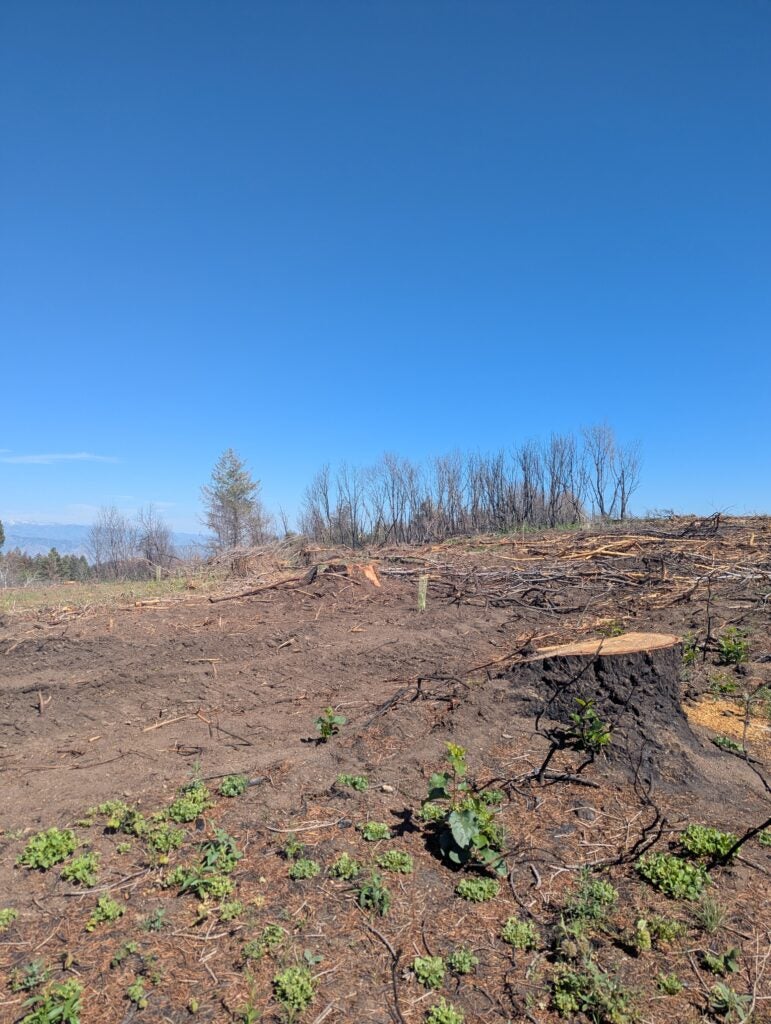
Despite the burn, we were able to run nets at all our historic songbird net lanes. We banded 57 individuals (about on par with past years) and had some recaptures from previous years. We wonder what they think of all this change?
In all this change, we’re reminded that fire has always been a part of this landscape—and seeing the rebound in these habitats gives us hope. We’re balancing these feelings with:
- the heart side—we will miss the views we all knew, the impact this will have on our crew and visitors using the site, and the shade of those old Douglas-fir trees, and
- the impact side—we know that these habitats are not recovering in a vacuum. Human impacts on these landscapes, through the introduction of invasive plants and through worsening climate change, will require human intervention if we want to see these habitats return in as close to a “natural” way as possible.
Fire has always been in these habitats. Unchecked human influence has not.
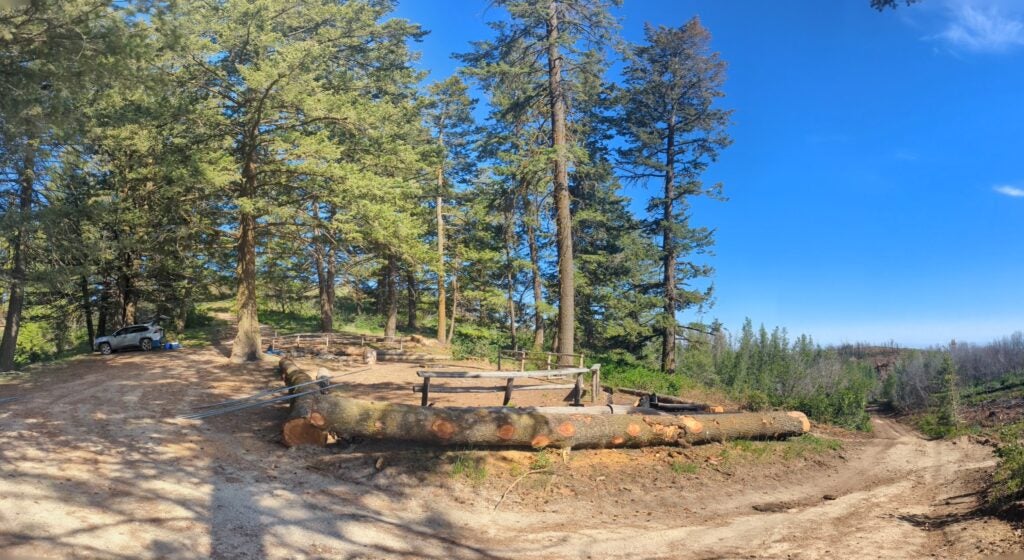
We have a few more breeding season monitoring dates coming up before we start daily migration monitoring in mid-July. We’ll continue to share updates as the summer goes on.
For now, it doesn’t look like we’ll be able to host overnight visitors this fall season (we’ll need every shaded, flat tent spot for our crew to replace the ones that were destroyed), but we hope to see you all this fall for day visits to our projects. Stay tuned.
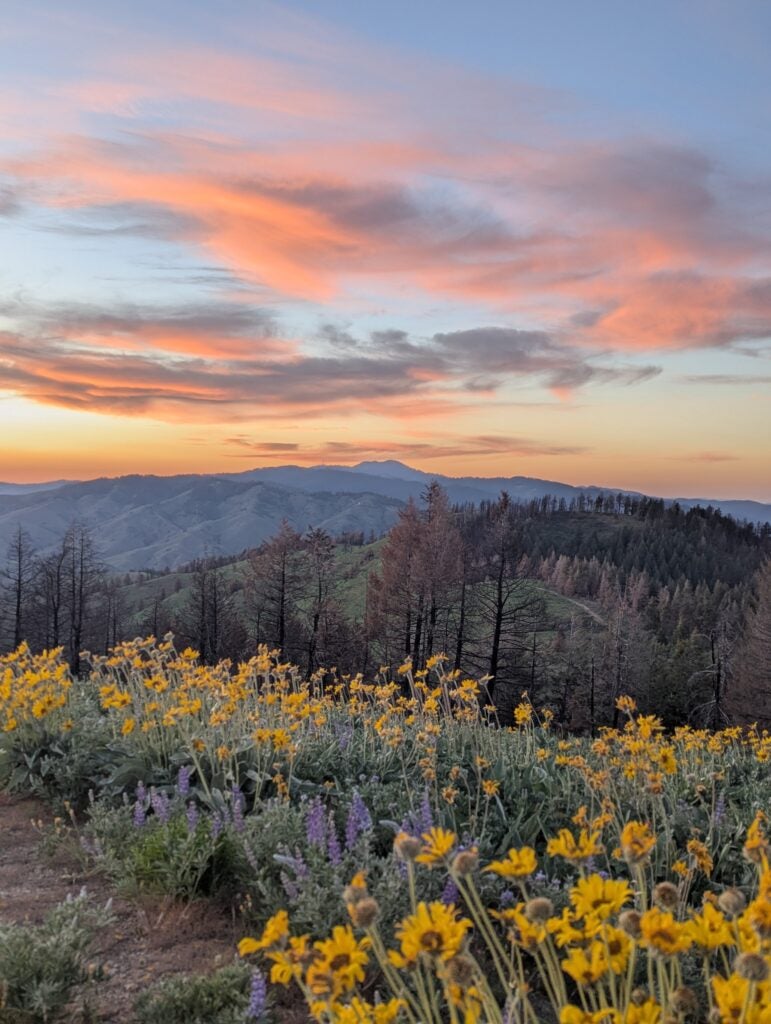
Update from November 2024
Restoration work has begun and we need your help!
In November, over 70 volunteers, including many IBO friends, joined the Idaho Department of Fish and Game (IDFG) to plant seedlings in the Valley Fire burn area. It gave us so much hope to see new growth emerging on the scorched hillside where our hawk blind once stood. We’re partnering with IDFG to recruit volunteers for ongoing habitat restoration. Sign up here if you’d like to join them!
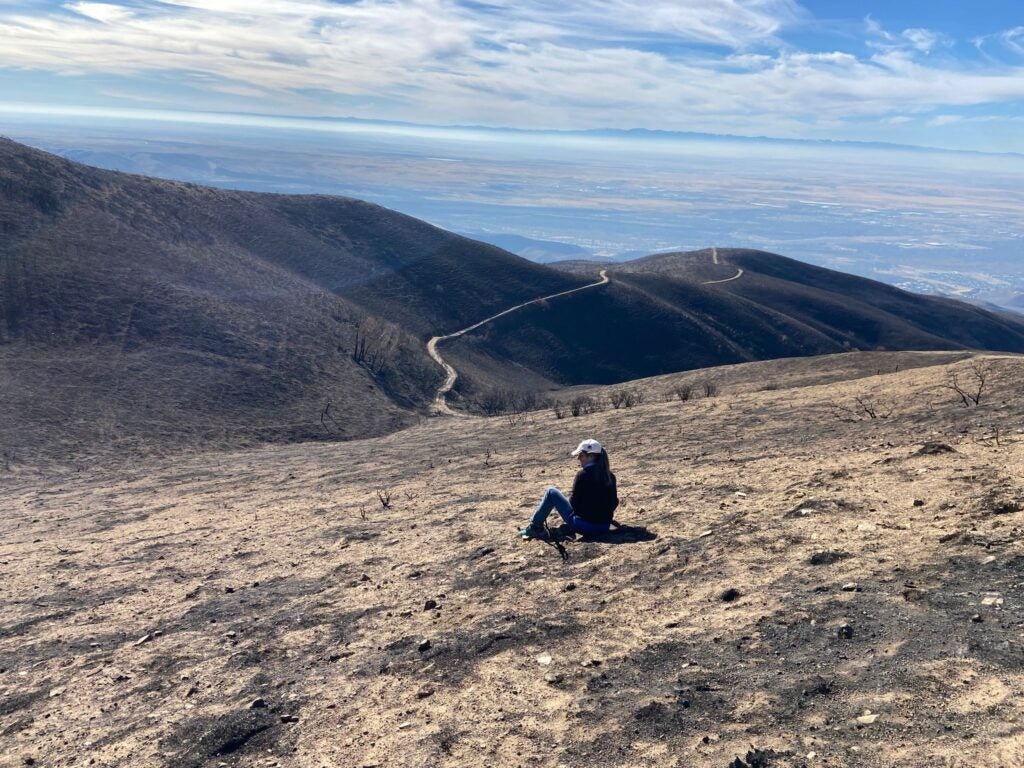
Valley Fire Updates from Tuesday October 22nd
Our story has been featured by local media outlets, including visuals and footage from camp. Visit these web pages to hear more:
Visit to Lucky Peak Camp:
Update as of 11:09pm on Saturday October 12th
Some of our staff were finally able to access our Lucky Peak camp on Friday, October 11th. We’re so thankful for the hard work of the firefighters and land managers who made it possible for us to return to our research station! We’re full of every mix of emotions after returning from our visit to the site.
Valley Fire photos
Here’s a summary of what we saw:
The overall news is that the center of our camp escaped serious damage. Some of the large central trees near the main camping pad and kitchen tent are still standing with needles on them. Our yurt was not burned down and our wall tents are still standing, however we still need to evaluate these for smoke damage as they were remarkably close to some very intensely burned areas of the peak. It is a relief that at least some of our gear was spared and that part of this beautiful place still looks much like it once was.
The surrounding areas around camp did not fare so well. Tragically, a very intense burn moved through the treed hillside where most of our songbird and raptor crew camped, as well as the dispersed area where the owl team camped. The tents and field gear of our crew were completely destroyed, and the large douglas fir trees in this area were burned. We’re heartbroken for them and are working hard with the insurance folks. We want to make sure our crew are taken care of. We feel a deep sense of loss and sadness for our team and the personal belongings that just can’t be replaced.
The burn also encompassed a good portion of the shrubs around camp, but it was patchy with some areas completely scorched while others nearby were untouched. Of our mist nets, it seems that there will still be vegetation at about half of our songbird net lanes. Our owl camp station was only lightly burned, but our ridge station was intensely burned.
Our raptor trapping blind was completely burned to the ground along with all the equipment inside.
After 30 years of monitoring birds at this site, we’re not going to let this deter us from our mission of bird research, outreach, and education. We are currently working on plans as to how exactly we will be able to return to monitoring here and when it will be safe. Of course we are wondering what new research questions we can ask about bird population recovery after wildfire in this gigantic and forced natural experiment.
Whatever the timeline and whatever our action plan, it’s clear to us now more than ever that we are going to need you, our community, to help pull us through, and continue to support us as you always have.
If you haven’t already, please fill out our volunteer form if you might be interested in helping out. We have some immediate needs now, but expect as we learn more we’ll be reaching out with more volunteer opportunities.
Longer term, there will be a long road to habitat restoration ahead. We’ll be working with Idaho Department of Fish and Game and land management agencies to support their habitat restoration efforts in the broader area. But, Lucky Peak being Lucky Peak, you can be sure that we will want to give some extra TLC to any restoration needed around our research station. Whenever access is safe we will be ready to join our partners in whatever work needs to be done.
We’re incredibly grateful to have insurance to help replace much of the gear we lost, but so much of what makes Lucky Peak special goes beyond “stuff” you can buy. It’s the spirit of the place—the community, the history, the habitat—that makes it the beloved spot we all cherish.
Your donation today will help us regroup, restore, and even enhance our research and outreach efforts. It’s going to take all of us—your generosity and volunteer support included—to bring Lucky Peak back to life.
Can you help us today by supporting those priceless elements of the place we love? Your support will allow us to support any agency habitat restoration activities, bring together community partners, recruit and organize volunteers, hand-craft our specialized raptor trapping equipment, revive our educational programming, and sustain the trainee program that lies at the heart of Lucky Peak’s future.
Together, we can ensure that Lucky Peak comes back stronger than ever. If you’d like to help, please donate today.
Valley Fire Updates as of 11:05pm, Tuesday October 8th
Firefighters continue the tough work of containing and controlling the Valley Fire. It is currently listed as 66% contained. We’ve been in contact with BLM dispatch and because the fire is still considered very active we will not be able to gain access to the site for a while yet. We will continue to check in with them daily as fire conditions change.
From what we could see from town, smaller areas of smoke continued to rise fairly close to the peak, but overall smoke was much less. We haven’t had any direct updates on the status of our research station today. Looking at the peak from the south it looks like there is a mix of burned and unburned trees right near camp.
We continue to appreciate you all, and your outpouring of care and kind messages. Right now we are in the tough position of being in a waiting game. Until we can access our site and truly know the extent of damages we’re finding it hard to know what to ask for in regards to support. For now, keep our team of technicians, staff, and Lucky Peak in your thoughts. This has been a rough week processing what’s happened, while still not being able to fully process the events of the fire because there’s so much still unknown about what we’ve actually lost.
You can donate to support us during these uncertain times by giving to our general fund.
Valley Fire Updates as of 11:00 am, Monday October 7th
Firefighters continue to work to control the Valley Fire which is nearly 10,000 acres so far.
IBO staff and our team are in close communication with the Idaho Department of Fish and Game Boise River WMA staff as well as BLM fire. We don’t expect that Highland Valley Road or our station will be re-opened any time soon. So this effectively means that our fall 2024 season has officially ended.
We hope to get access to our Lucky Peak station sometime this week to survey the damage. From what we can see on the ground we know that the fire reached some trees on the back side of the peak. We have heard that the yurt and wall tents may still be standing, but nothing is confirmed so far. We’ve also heard that area around the peak received a number of treatments with fire retardant.
We will update when we know more. Thank you for all your thoughts and kind wishes.
You can donate to support us during these uncertain times by giving to our general fund.
As of 10:40 pm, Friday October 4th
Our crews and a school group evacuated safely this morning. Everyone is off the peak. Our Diane Moore Nature Center station is safe.
Based on views we have from town we believe our Lucky Peak hawk trapping blind has been completely destroyed by the nearly 8,000 acre Valley Fire.
We’re waiting to find out the status of our main camp, banding equipment, the yurt, our crew’s belongings, or the habitat at the peak.
We’re not sure the full extent of what we will need to enable us to recover from the fire. Our staff, traineeship program, outreach work, and more could use your support. If you’d like to help please donate today.
Thank you for your thoughts and concern. We’re glad our crews are safe. This wasn’t how we wanted to mark our 30th year.